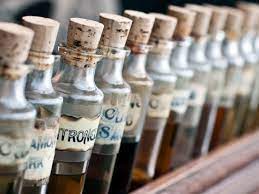Skin Cracks: Causes and Solutions for Healthy Skin
Skin cracks, though often overlooked, can be a source of discomfort and a sign of underlying health issues. These small fissures in the skin can occur anywhere on the body but are most common on the hands, feet, and lips, where the skin is more exposed to environmental factors. Understanding the causes of skin cracks is essential for finding effective solutions and maintaining healthy, resilient skin. This article delves into the various factors that contribute to skin cracking and offers advice on prevention and care.
Environmental Factors
One of the primary causes of skin cracks is exposure to harsh environmental conditions. Cold, windy weather can deplete the skin’s natural oils, leading to dryness and cracking. Similarly, hot, dry climates can increase water loss from the skin, exacerbating dryness. Indoor factors, such as central heating and air conditioning, can also strip moisture from the skin, making it more susceptible to cracking.
Dehydration
Dehydration occurs when the body loses more fluids than it takes in, affecting the skin’s ability to retain moisture. When the skin is dehydrated, it becomes dry, tight, and more prone to cracking. Drinking adequate amounts of water and consuming foods with high water content can help maintain skin hydration and elasticity.
Chemical Exposure
Frequent contact with harsh chemicals, detergents, and soaps can compromise the skin’s natural barrier, leading to dryness and cracks. Protective measures, such as wearing gloves while cleaning or using gentle, fragrance-free products, can help prevent skin damage from chemical exposure.
Nutritional Deficiencies
Nutrition plays a crucial role in skin health. Deficiencies in vitamins and minerals, particularly vitamin C, vitamin E, zinc, and omega-3 fatty acids, can affect the skin’s ability to repair itself and maintain moisture, leading to increased dryness and susceptibility to cracking.
Skin Conditions
Certain skin conditions, such as eczema, psoriasis, and dermatitis, are characterized by dry, flaky skin that can crack and bleed. Managing these conditions with appropriate medical treatment and skincare routines is essential for reducing symptoms and preventing skin cracks.
Age-Related Changes
As the skin ages, it naturally becomes thinner and produces less oil, making it more prone to dryness and cracking. Using moisturizers and products designed for aging skin can help replenish moisture and support the skin’s barrier function.
Solutions for Preventing and Treating Skin Cracks
Preventing and treating skin cracks involves a combination of environmental adjustments, skincare practices, and lifestyle changes:
- Moisturize regularly: Applying a thick, emollient moisturizer immediately after bathing can help lock in moisture and protect the skin from cracking.
- Use a humidifier: Adding moisture to the air in dry environments can help prevent skin dryness.
- Protect your skin: Wearing gloves in cold weather and when using cleaning products can prevent skin damage.
- Stay hydrated: Drink enough clean water throughout the day. Read about how to prepare clean and healthy and clear water at home in this article.
- Seek medical advice: For persistent or severe skin cracks, consulting a dermatologist is recommended to determine the underlying cause and appropriate treatment.
Conclusion
Skin cracks, while common, can indicate the need for better skincare practices or underlying health issues. By understanding the causes of skin cracking and implementing preventive measures, individuals can maintain healthy, resilient skin. Remember, healthy skin is not only about appearance but also about overall well-being.



